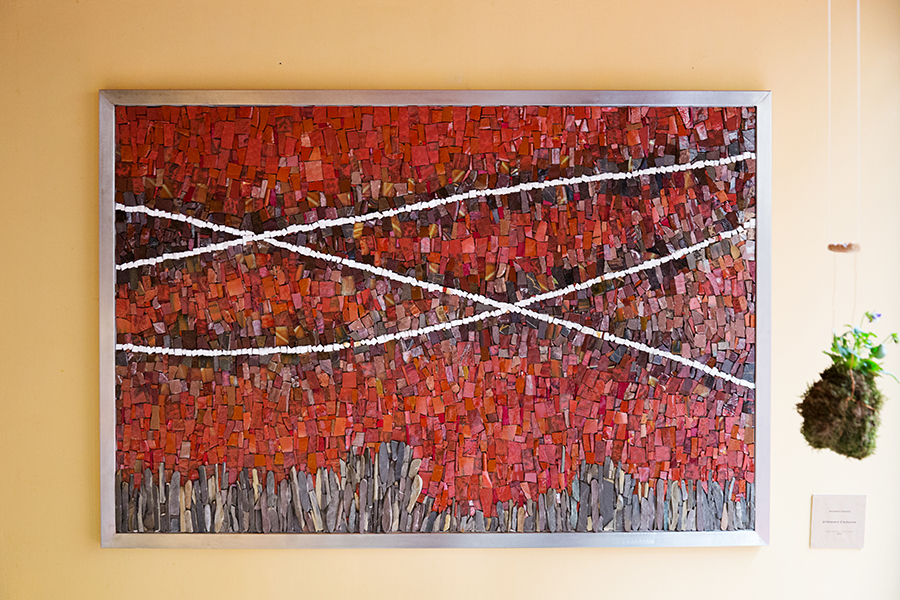“Primavera d’autunno”. Un mosaico nato da un incontro. Il Ritratto di un viaggio e il significato dei confini europei per chi Europeo non è.
“Primavera d’autunno” [Autumn Spring] is a contemporary mosaic by Mohamed Chabarik that will be displayed as part of the RiTratti collective exhibition at the EContemporary Gallery in Trieste from 5 December 2014 to 28 February 2015.

(Photo by Giovanni Chiarot/ Puntozero)
Where did the idea for this work come from? What gave rise to it?
I had been working on the concept of lines that intersect and then continue beyond the background for some time.
But this time something unexpected happened. I had just drawn the lines when I met a Syrian man fleeing the war, who had arrived in Italy along with other refugees. This encounter and the relationship I forged with him completely transformed the meaning of my work and my artistic expression.
What meaning do you assign to this work now?
For us the European borders are white, as they may as well not exist, but for these people they are impossible to cross. They flee to save themselves, but once they arrive in Europe the borders block their path, so they cannot be saved definitively.
I created Primavera d’autunno whilst thinking about the journey this person had undertaken, the route travelled to arrive here, across the sea of the Strait of Sicily. The sharp stones recall the Libyan or Tunisian coastline, with its dry, hard earth.
I mixed natural and artificial materials in this work. It was a real challenge to find a way to balance the different glazes, stones and pebbles.
From what you are saying one can sense the power of art, capable of highlighting events and stories, of giving them a voice. Sometimes it can even denounce, interrogate or rally. From this perspective, creating art can also become a political act, in the sense of playing an active role for the common good. What do you think?
I think there is always the risk of wanting to boost one’s ego more than highlighting the issue being denounced.
I don’t believe art should provide answers, otherwise it is making a judgement, and it is often the attitude of those who think they possess the truth that causes wars and conflicts. Rather than providing answers, art can raise questions, or at least communicate one’s thoughts truthfully, without worrying too much about the consequences.
But don’t you think that art can effectively become a political act, and therefore capable of rousing, destabilising and rallying people?
Yes, it has this potential, but it all depends on how successful the work is. If it is not particularly striking, it if doesn’t move you or lead to real change, it is useless. This is why I am afraid to tackle big questions like war directly. I’m afraid that everything will remain on a spiritual, theoretical or intellectual level, and thus nothing will change.
Why did you choose the title “Primavera d’autunno”?
The word “primavera” (spring) refers to the Arab Spring, while the word “autunno” (autumn) is connected both to the season in which I completed the work and to the historical situation, the fact that this “Spring” is turning out to be more destructive than restorative.
Your work will be displayed at the collective exhibition RiTratti at the EContemporary Gallery in Trieste. How does your work relate to the theme of this exhibition?
The title of the exhibition means “portraits”, not in the usual representational sense, but instead portraits that narrate facts, situations and experiences.
In this sense my work is the portrait of this Syrian man’s journey and experience, the portrait of a moment in time, but also of my personal encounter with this man, of the feeling I myself experienced first-hand through this meeting. It is therefore also a portrait of me.
[Interview by Laura Pizzini]



